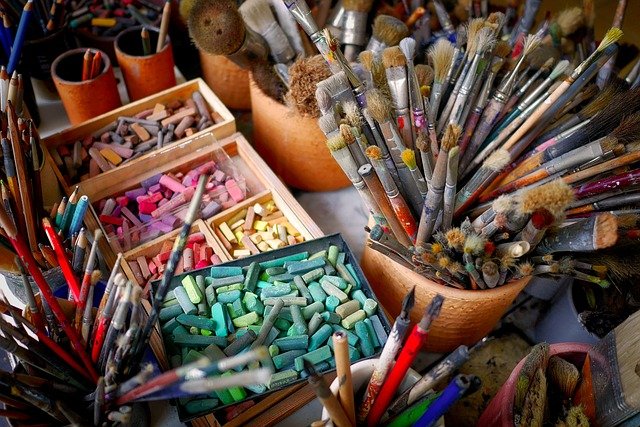Craft Ideas to Boost Creativity: DIY Projects for Any Hobby
Crafting combines hands-on making with creative thinking, and simple craft ideas can open new ways to relax, learn, and express yourself. Whether you’re starting a new hobby or refining skills, approachable projects let you experiment without heavy investment. This article outlines practical craft concepts, ways to stimulate creativity, DIY techniques, art-focused approaches, and how to keep a hobby sustainable over time.

Craft projects for beginners
Beginner craft projects are designed to teach basic techniques while producing satisfying results. Start with paper crafts like folded cards or simple origami, textile projects such as no-sew felt pouches, or basic clay modeling to learn shaping and texture. These projects emphasize repeatable steps and inexpensive materials so you can build confidence. Keep instructions clear, work in short sessions, and choose projects that finish quickly—early wins help maintain momentum and encourage trying slightly more complex techniques next.
How can creativity improve your projects?
Creativity influences choice of materials, color, and form, turning routine tasks into personal expressions. To boost creativity, try combining unrelated techniques—stitching on painted paper, or embedding pressed flowers into clay pieces. Use limited palettes or fixed toolsets to spark inventive solutions, and set small constraints like time limits to prompt intuitive decisions. Creative exercises such as sketching several variations before starting or keeping a visual idea journal help you iterate faster and develop a recognizable personal style across multiple craft projects.
DIY techniques and essential tools
A few core DIY techniques unlock many craft possibilities: cutting and joining, adhesion, surface finishing, and basic sewing. Essential tools for most hobbies include a cutting mat, utility knife, scissors, glue options (PVA, hot glue), basic hand-sewing needles, and a set of brushes. Invest in a small set of quality tools rather than many low-grade items—good scissors and a reliable glue gun make projects easier and safer. Learn safe tool use (cutting away from the body, unclogging hot glue) and maintain tools to extend their usefulness.
How can art expand your skillset?
Art practices such as color theory, composition, and observational drawing enhance craft outcomes by improving aesthetic decisions. Painting simple backgrounds or practicing mark-making can enrich mixed-media projects; learning to draw basic shapes helps when sculpting or pattern-drafting. Exploring art-focused exercises—like limited-palette studies or gesture sketches—sharpens visual judgment that transfers to jewelry making, paper crafts, or textile design. Viewing art in galleries, books, or online collections can also supply references and inspire new directions for your craft work.
Turning a craft into a lasting hobby
To sustain a hobby, balance challenge with enjoyment and create a routine that fits your life. Set small, achievable goals—complete one mini project per week or learn a single technique per month. Organize a dedicated workspace, even a small drawer or tray, to reduce set-up friction. Track progress with a project log or photo archive to reflect on improvements and identify favorite methods. Joining community groups, classes, or local services offering workshops can keep motivation high and provide feedback that helps you grow without turning the hobby into undue pressure.
Finding supplies and local services
Sourcing materials affects both cost and the ecological footprint of a craft. Local craft stores, independent art supply shops, and community centers often carry useful basics and sometimes host workshops. Thrift stores and fabric remnant bins offer affordable materials for experimentation. Libraries and maker spaces provide access to equipment like laser cutters, sewing machines, or printmaking tools along with community guidance. When choosing supplies, check material safety—labels for non-toxic paints or suitable adhesives—and prioritize quality for tools you’ll use repeatedly to reduce waste and frustration.
This overview presents ways to choose projects, develop creative habits, adopt DIY techniques, apply artistic thinking, and sustain craft activities as a hobby. Approaching craft as an iterative, low-pressure practice helps you explore new processes, build skills, and enjoy the practical rewards of making.






